Do you dream of a smooth, irritation-free shave but wake up to red bumps and razor burn? If you have sensitive skin, shaving can be a battle. But fear not! This guide will unveil the 10 best shaving creams for sensitive skin, formulated to soothe and protect your skin while delivering a close, comfortable shave. Get ready to ditch the discomfort and embrace the confidence of a shave that pampers!

WHAT SHAVING CREAM IS SAFE FOR SENSITIVE SKIN?
When you’re checking the ingredients in shave products for sensitive skin, it’s good to look for certain things. Dr. Marisa Garshick, a skin doctor in New York City and New Jersey, suggests looking for glycerin because it pulls moisture into the skin, and shea butter because it keeps moisture in and makes your skin softer. Also, it’s helpful to find ingredients like oatmeal or aloe that calm your skin and ingredients like jojoba oil that moisturize it.
Another skin doctor, Dr. Joshua Zeichner, also likes ingredients such as avocado butter and vitamin E because they are very good for your skin. He recommends using creams or thick gels because they protect sensitive skin from rubbing.
Dr. Garshick says that creams are better for dry or sensitive skin, while gels and foams are better for oily skin. But it also depends on what feels best for you, as foams are lighter and easier to wash off.
WHAT SHAVING CREAM TO AVOID WITH SENSITIVE SKIN
If you have sensitive skin, there are a few ingredients you should steer clear of when choosing a shaving cream:
- Sulfates (SLS or SLES): These create a lather but can be harsh, stripping away natural oils and causing dryness and irritation.
- Fragrances: Artificial fragrances are common irritants and can trigger allergic reactions. Opt for fragrance-free shaving creams.
- Alcohol: Alcohol can be drying and exacerbate sensitivity. Look for alcohol-free formulas.
- Propylene Glycol: This ingredient can irritate some people, so it’s best to avoid it if you have sensitive skin.
BEST SHAVING CREAMS FOR SENSITIVE SKIN
AVEENO POSITIVELY SMOOTH SHAVE GEL
Aveeno Positively Smooth Shave Gel is a great option for those with sensitive skin seeking a comfortable shave. This fragrance-free formula skips harsh ingredients like sulfates and alcohol, making it gentle on irritated skin. It contains soothing aloe and vitamin E to help prevent nicks, cuts, and razor bumps, leaving your skin feeling smooth and hydrated. Users also report that the gel provides a good glide for a close shave. If you’re looking for a gentle yet effective shaving product, Aveeno Positively Smooth Shave Gel is definitely worth a try.

BLU ATLAS SHAVE CREAM
Blu Atlas Shave Cream caters specifically to those seeking a natural and potentially irritation-reducing shaving experience. Formulated with 96-100% naturally-derived ingredients, it boasts a calming and soothing effect thanks to hydrating glycerin and nourishing oat bran extract. This shave cream is designed to be used without a brush, resulting in a thinner, lightweight lather. While some users find this lather effective, it might take some adjustment compared to thicker traditional creams. However, the focus on natural ingredients and potential for reduced irritation makes Blu Atlas Shave Cream an intriguing option for those with sensitive skin, especially if they don’t mind a different lather texture.
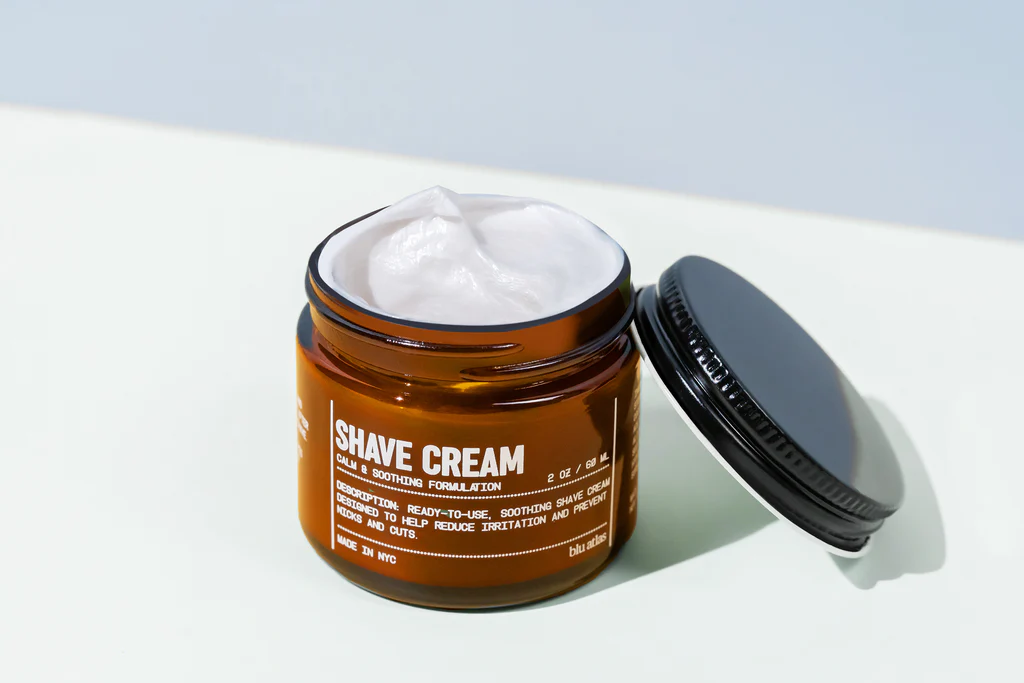
FLAMINGO FOAMING SHAVE GEL
Flamingo Foaming Shave Gel promises a comfortable shave for all skin types, including sensitive skin. It boasts a luxurious gel-to-foam formula that transforms into a thick, pillow-y lather. This rich layer helps create a smooth glide for your razor, minimizing friction and irritation. Flamingo’s formula also contains aloe vera, known for its soothing properties, which can help calm and hydrate your skin during the shave. Another plus is that the gel is designed to stay put on wet legs while rinsing clean from your razor blades, making for a mess-free experience. While some users might prefer a fragrance-free option, Flamingo Foaming Shave Gel could be a good choice for those with sensitive skin who prioritize a comfortable shave and a luxurious feel.
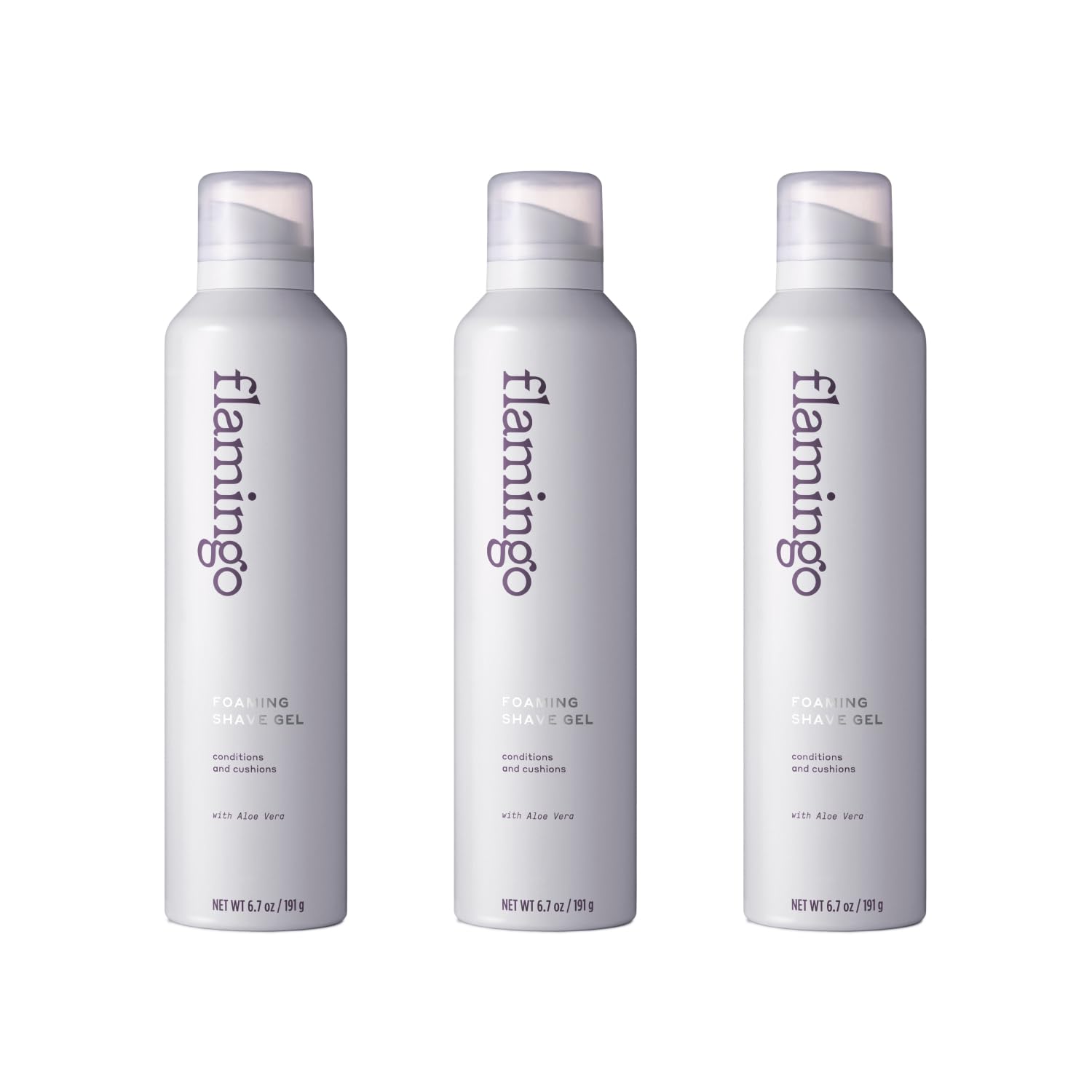
GILLETTE SATIN CARE ULTRA SENSITIVE SHAVE GEL
Gillette Satin Care Ultra Sensitive Shave Gel is a fragrance-free and dye-free option designed specifically for those with sensitive skin. This dermatologist-tested formula prioritizes minimizing irritation by omitting common triggers. The gel offers a lubricating layer to enhance razor glide, promoting a closer shave with less friction. Gillette Satin Care also aims to leave your skin feeling smooth and hydrated, potentially reducing the appearance of razor bumps. If you’re familiar and comfortable with Gillette products and prioritize a fragrance-free, dermatologist-tested shave gel, then Gillette Satin Care Ultra Sensitive Shave Gel could be a strong contender for your shaving routine.
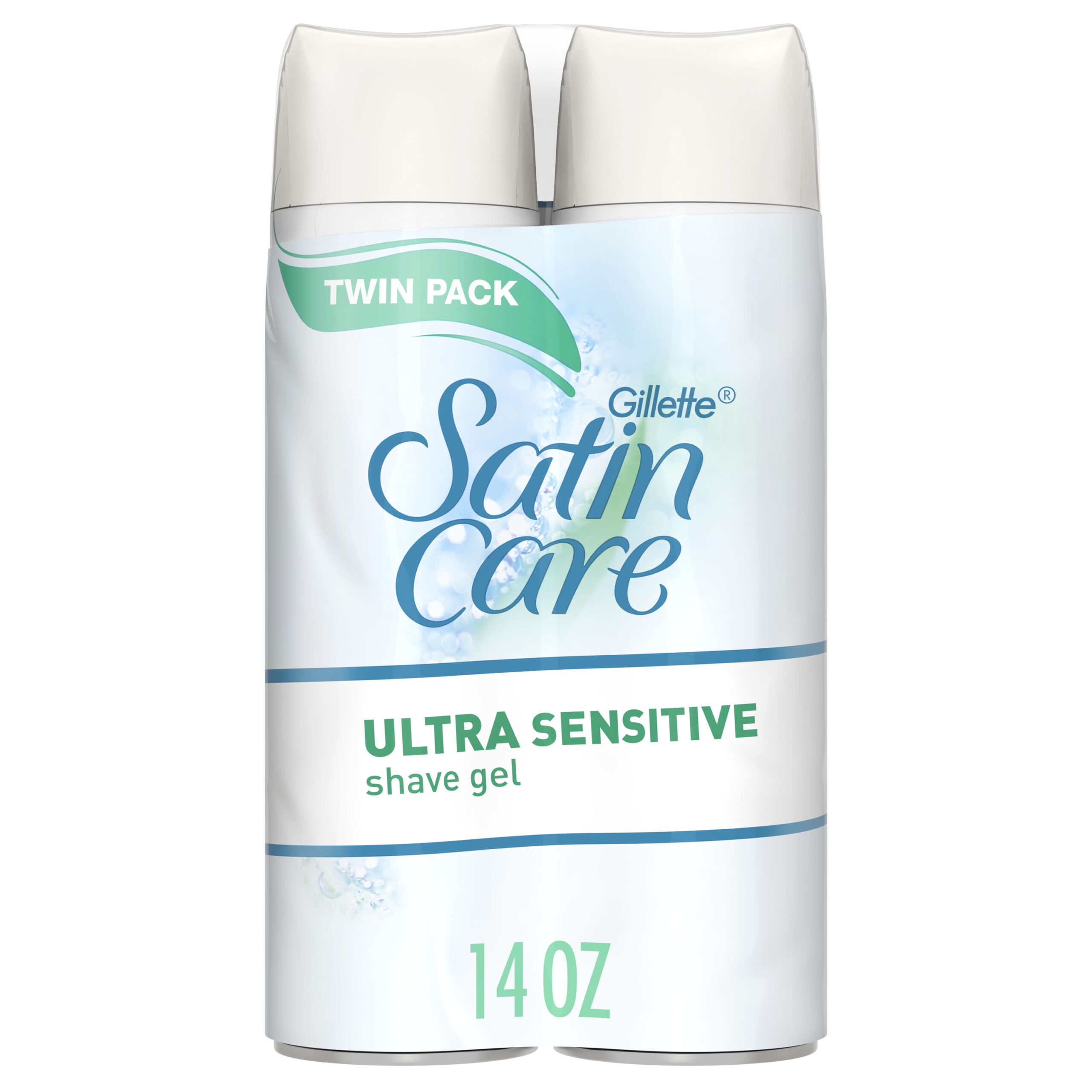
VANICREAM SHAVE CREAM
Vanicream Shave Cream is a solid choice for those with sensitive skin seeking a fragrance-free and no-nonsense approach. It boasts a thick, moisturizing formula that spreads easily and creates a good barrier for your shave. This can be particularly helpful in reducing razor burn and irritation. Users report feeling a noticeable difference in post-shave dryness, with some even suggesting it feels like they’ve already applied lotion. While some reviewers find a faint, slightly off-putting odor, the lack of added fragrance makes it a good option for those with fragrance sensitivities. Keep in mind that the thick formula might require a bit more rinsing to ensure it doesn’t clog your razor blades.
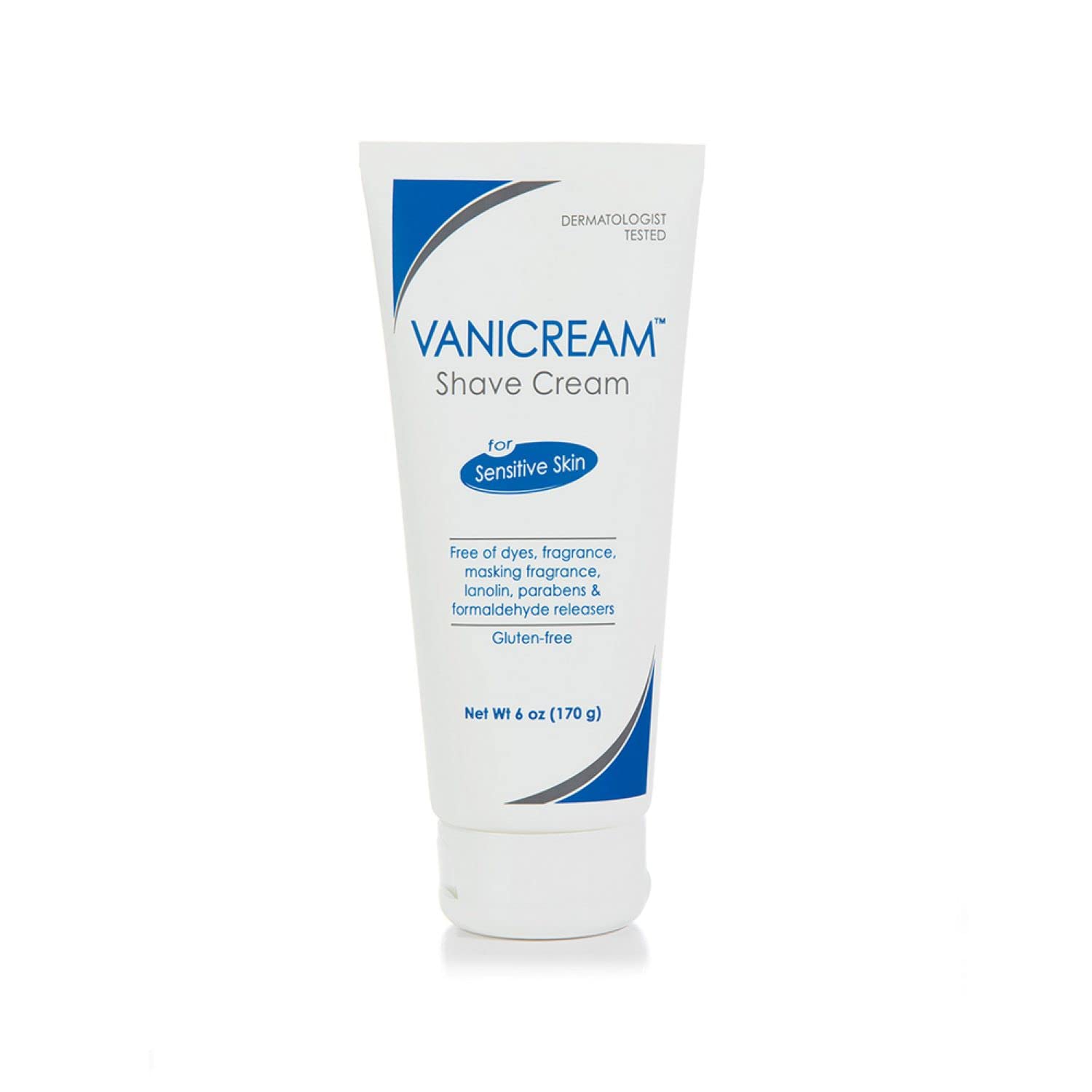
OUI THE PEOPLE MOISTURIZING SHAVE GEL-TO-MILK
Oui The People’s Sugarcoat Moisturizing Shave Gel-to-Milk offers a unique and potentially luxurious experience for those with sensitive skin seeking a close, comfortable shave. Unlike traditional creams, it starts as a gel and transforms into a milk during application. This innovative formula boasts a blend of nourishing oils, including argan, grapeseed, marula, and sunflower. These oils aim to provide deep hydration while allowing your razor to glide effortlessly, minimizing friction and irritation. The inclusion of Vitamin C adds a brightening boost, potentially leaving your skin looking radiant after the shave. With its focus on natural ingredients and unique texture, Oui The People’s Sugarcoat Shave Gel-to-Milk might come at a higher price point compared to some drugstore options. However, it’s a good choice for those willing to invest in a potentially more luxurious and effective shaving experience for their sensitive skin.
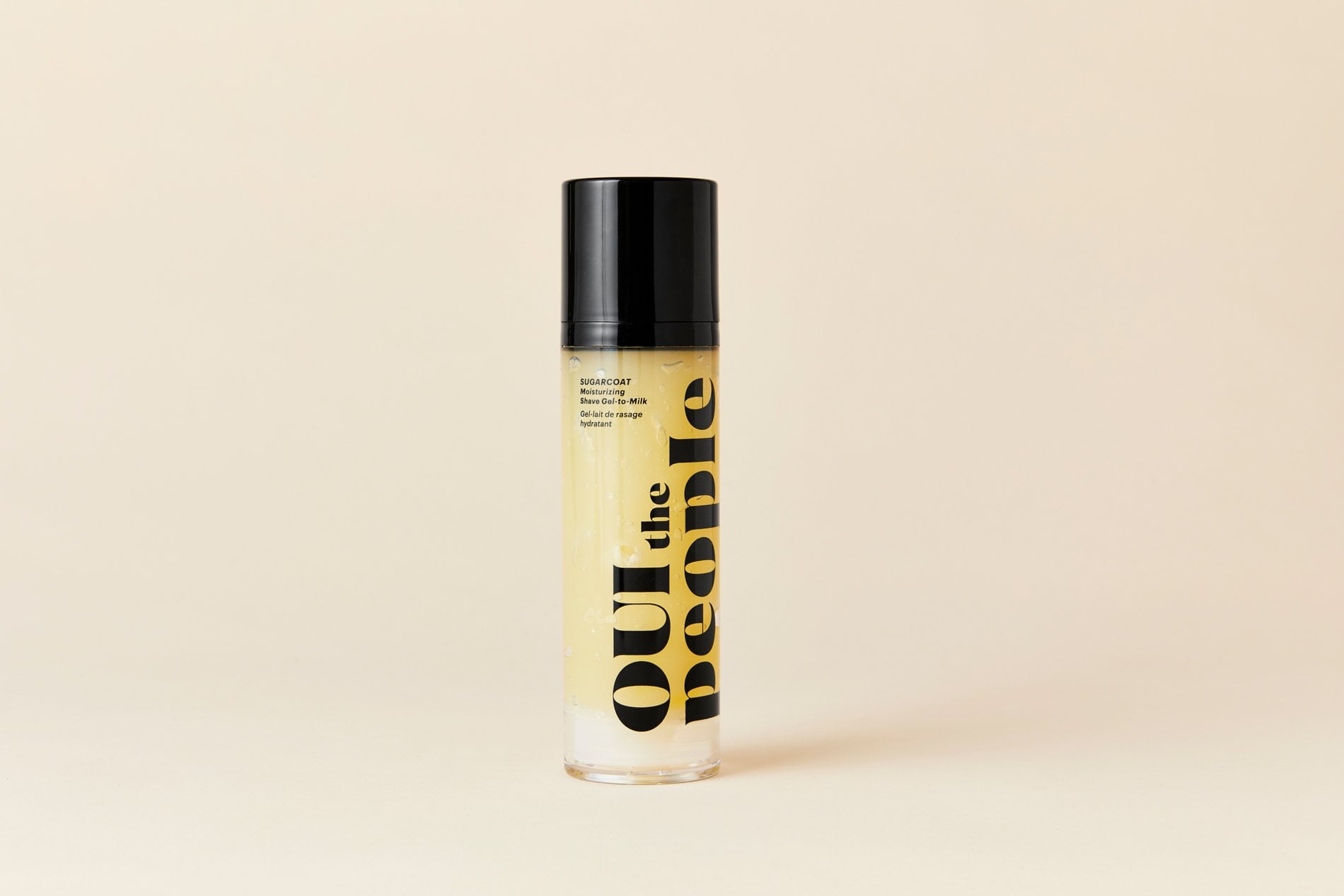
THE ART OF SHAVING UNSCENTED SHAVING CREAM
If you have sensitive skin and crave a classic shaving routine, The Art of Shaving Unscented Shaving Cream is a worthy contender. This fragrance-free formula caters to those who might be irritated by artificial scents. It delivers a rich, foamy lather that helps soften beard hair for a close, comfortable shave. The Art of Shaving prioritizes protecting your skin from irritation and razor burn, making it a good choice for those prone to shaving bumps. While some users might find it pricier than drugstore options, The Art of Shaving Unscented Shaving Cream offers a potentially high-quality shaving experience formulated specifically for sensitive skin.

HARRY’S SHAVE CREAM
Forget about cuts, bumps, or hair you don’t want; just smooth, clear skin without any hairy hair. We really like saying “hairy hair,” especially when we’re talking about Harry’s products.
Harry’s shaving cream uses natural stuff like cucumber and aloe to make your skin feel good while you shave. It makes lots of foam and feels really soft on your skin. It’s like spreading a fluffy cloud on your face that’s full of aloe to keep your skin happy. It also has oils to help with dryness after you shave. You’re supposed to use Harry’s Shave Cream on your face, but you can use it anywhere on your body to avoid cuts and bumps. Some people might find it irritating because it has things like eucalyptus and marula oil in it. But don’t worry, it doesn’t have any bad stuff like sulfates or parabens in it.

TRULY COCO CLOUD AFTER SHAVE MOISTURIZER
If you shave a lot, your skin might lose moisture. That’s why it’s good to use a moisturizing shave lotion like Truly Coco cloud. It smells really good, and we found that after just two times using the razor, our skin was smooth. The lotion feels thick when you first put it on, so it’s better to rub it between your hands before spreading it on your skin. It turns white and foamy, making it easy to see where you’ve put it. If you put too much on, you might need to shave over it again. But after shaving, your skin feels smooth and smells nice. This lotion is great if you shave every day because it keeps your skin really hydrated.
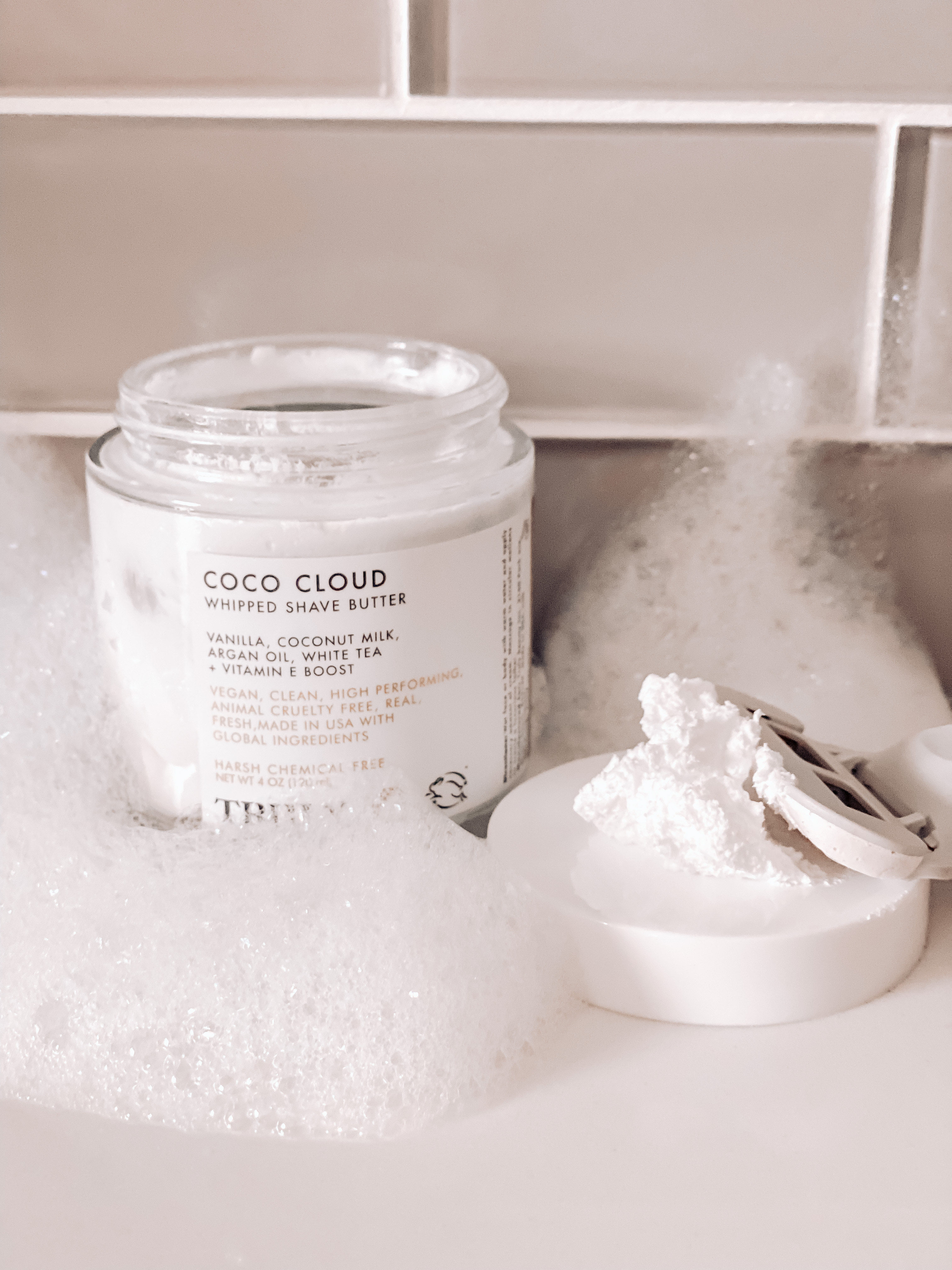
PACIFIC SHAVING COMPANY CLEAN SHAVE CREAM
This shaving cream has good stuff like shea butter, vitamin E, and sunflower seed oil that make your skin feel really nice. It helps protect your skin from getting hurt by the razor and also makes it feel hydrated. The shaving cream makes lots of foam that feels smooth on your skin and keeps it safe. It comes in versions with no smell and a little smell for anyone to use.

HOW TO SHAVE WITH SENSITIVE SKIN
Here are some easy steps to help you get a good shave if you have sensitive skin:
- Make sure your skin is wet before you start shaving to avoid irritation.
- Use a razor made for sensitive skin.
- Put enough shaving gel or cream on your skin before you shave.
- Be gentle and take your time, especially in sensitive areas.
- Shave in the same direction your hair grows, not against it.
- Wash and moisturize your skin well afterward to keep it healthy.
- Test a small area of your skin with the shaving product before using it all over.
CONCLUSION
So there you have it, folks! Say goodbye to shaving worries. Along with the fundamental rules for shave down there, these top 10 shaving creams can help you avoid razor burn and achieve smooth, irritation-free skin. Keep in mind to choose a cream that matches what you like – whether it’s fragrance-free, lathers up nicely, or uses natural ingredients. Armed with the perfect product, you can confidently tackle your reflection and embrace the day with skin as stunning as it feels.




